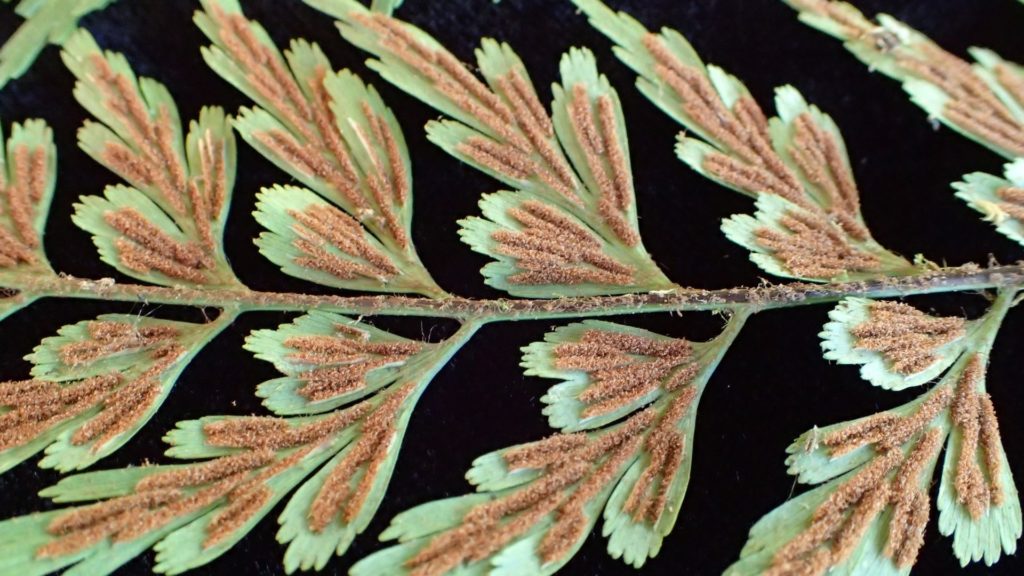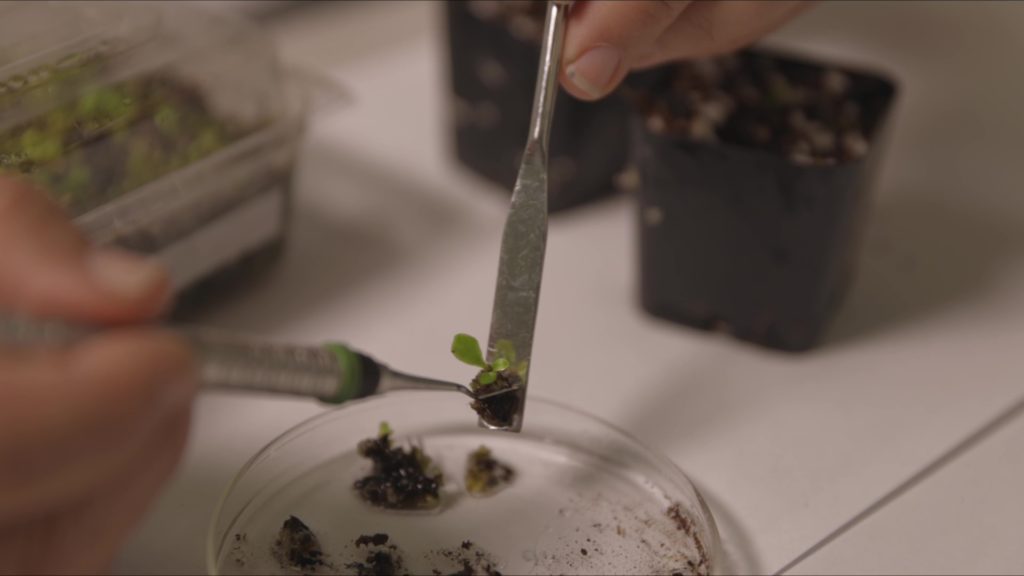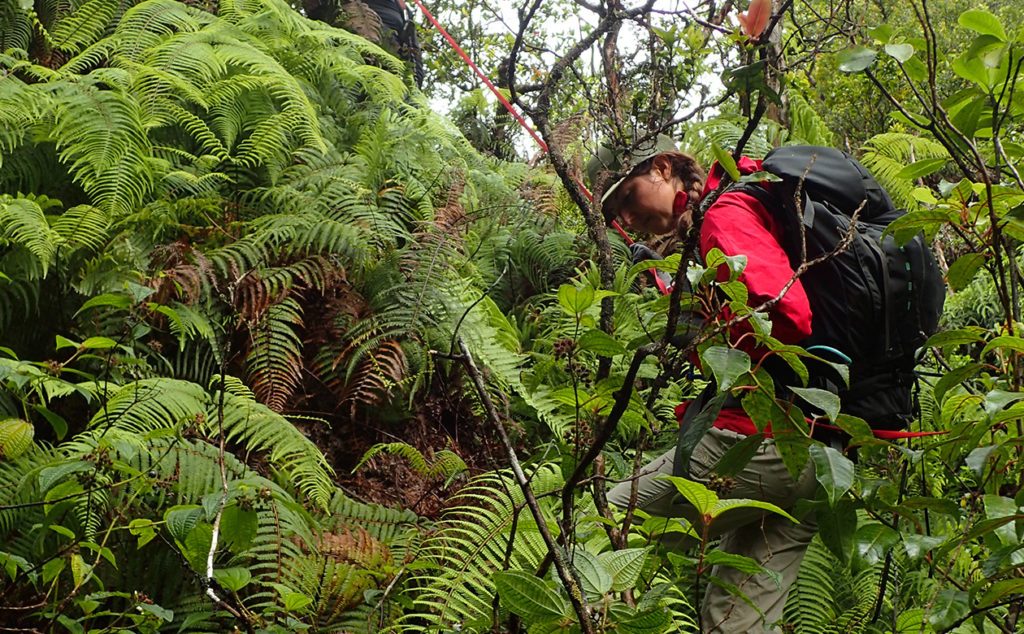Often overlooked, ferns are a critical part of Hawaii’s native forest ecosystems and watersheds. Since 2007, the NTBG Fern Laboratory has been one of very few botanical research centers focused on the study and propagation of rare Hawaiian Ferns, which make up nearly 27.4 percent, or more than a quarter, of native flora. The need to understand and protect these vital species has never been greater. Read on to learn more about the Fern Lab, NTBG research, and how you can help save species today.
When you picture the flora of the Hawaiian Islands, colorful hibiscus, sweetly scented plumeria, and swaying coconut palms may be the first to come to mind. While important, these plants commonly associated with Hawaii are vastly outnumbered in native ecosystems by ferns. Across the islands, ferns dominate many niches in the wet, dry, and mesic forest environments. They absorb heavy rains, mitigate runoff, and provide habitat for native birds, moths, snails, and insects. Altogether there are 159 native species of ferns and lycophytes in the Hawaiian Islands, with 74 percent of those endemic to the islands.
The abundance and variety of ferns in Hawai’i are extraordinary, but so are the threats they face. Like many native Hawaiian plants, ferns are threatened by other plants, animals, disease, and loss of habitat. Ferns are particularly vulnerable because they lack defenses and usually grow low to the ground, near the mouths of hungry pigs, goats, and deer.

Critically endangered Hawaiian ferns have been at the center of NTBG Research Associate, Dr. Ruth Aguraiuja’s work for more than two decades. Previously, as a senior researcher at Tallinna Botaanikaaed (Tallinn Botanic Garden) in Estonia, Dr. Aguraiuja’s desire to learn more about Hawaiian fern biology, ecology, and conservation methods has led to many breakthroughs as well as the reintroduction of hundreds of plants to their in situ habitat on Kauai.
Finding efficient propagation and conservation methods is critical to success because growing some native ferns can be time-consuming. In 2016, Dr. Aguraiuja shuttled hundreds of native Hawaiian Asplenium ferns propagated from spores in Estonia back to Kauai. Dr. Aguraiuja collected the spores in 2011 while botanizing in the high elevation forests of Kaua’i. In their early stages, ferns can grow very, very slowly, sometimes taking as long as two years to become a sporophyte and develop simple, tiny fronds. Thanks to Dr. Aguraiuja’s work and partnership, NTBG, staff, researchers, and interns have continued to utilize the Fern Lab to propagate rare, endangered, and culturally significant ferns from tiny spores, and to preserve genetic diversity needed to re-establish endangered populations in the wild.
Prior to the existence of the Fern Lab, propagation was primarily done through division (splitting of one plant into two or more by breaking the original in half with roots and crown attached to both halves). While division is a successful and efficient method for species with long creeping and branching rhizome (underground horizontal stems), each new plant is an exact clone of the parent. This does not promote genetic diversity, a key component in successful restoration and species conservation. Additionally, not all ferns species can be propagated in this way. By developing the protocols to grow ferns successfully from spores, we will be able to maintain the genetic diversity found in nature, and we will broaden our list of species, particularly the rare ones, that we can conserve and add to both ex situ and in situ conservation sites.
Today, spore propagation is taking center stage in the Fern Lab, but there is still much to discover about these hardworking Hawaiian plants.

Pristine areas of Hawai’i are covered in ferns, which makes them critically important to restoration and conservation efforts, but little research is happening on a large-enough scale to make a big impact now. “Ferns provide the foundation of functioning ecosystems in Hawaii and we still have so much to learn about them,” said Mike DeMotta, NTBG’s Curator of Living Collections. “For example, the time from propagation to outplanting varies across species. For some rare ferns it takes four years to go from gametophyte to plantlet. For others we can outplant within months to a year – this is why we need to support our Fern Lab, so we can learn how to best grow and care for our native species ex situ and in the wild.”
Providing additional support to the NTBG Fern Lab will go further than propagation and outplanting. It will also provide bandwidth for further study and continuity not previously available. “I am excited about the potential of what we can learn and do with full-time staff and funding in the Fern Lab,” said Mr. DeMotta.
In addition to the propagation of ferns, NTBG interns are currently looking at fern spores saved in the herbarium collection and conducting propagation studies to see if spores retain their viability after drying. When possible, fresh spores of the same species are collected and propagated in the Fern Lab and compared to the dried spores. “Our hope with this study is to be able to recover more fern species from dried collections that have become rare over time”, noted Mr. DeMotta.

Hawai’i is a biodiversity hotspot which means the islands, while biologically diverse, also suffer from a high rate of habitat and species loss. In other words, the need for enhanced support directed toward the conservation of floristic diversity in Hawaii and tropical regions around the world is great.
“We need a renaissance in conservation,” said Ken Wood, NTBG Senior Research Biologist. “Managing just one species requires so much support. To manage and restore entire ecosystems of threatened and endangered plants requires action today. Now is the time to spread the word. Get your friends, family, and organizations involved,” Mr. Wood continued.
NTBG is dedicated to tropical plant discovery, conservation and research. Our work includes conducting regional plant surveys, documenting and describing new species, publishing data, furthering conservation efforts through research, protection, and cultivation, and re-establishing populations of rare plant taxa in situ.
Funding the Fern Lab and protecting native ferns is just one of the ways we are saving plants and saving people. You can support these critical and comprehensive efforts to protect plants and tropical ecosystems worldwide with a gift today. Donate now.